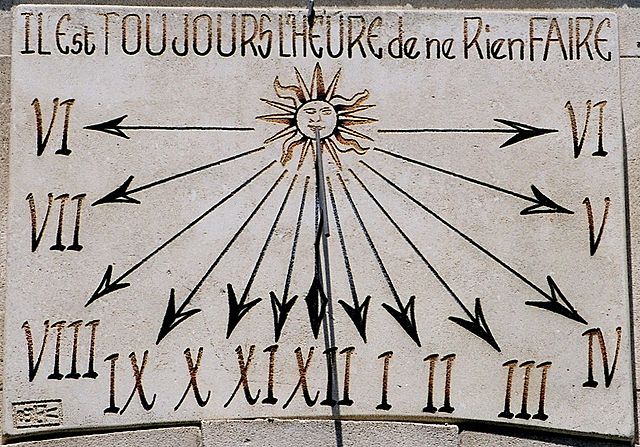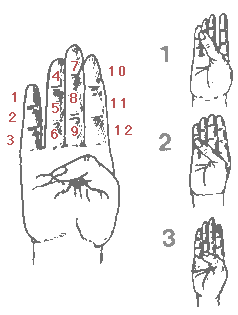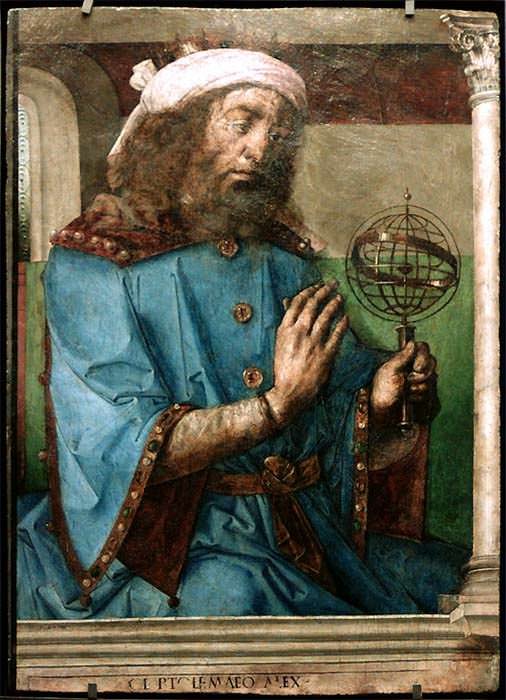The one who invented the clock, how did he know what time it was?
The first thing you should know is that humanity began to measure time long before inventing clocks. In antiquity time was measured in units such as days, weeks, months and years thanks to its synchronization with astronomical phenomena.

And why 12 hours and not another number?
It is due to the legacy of ancient civilizations such as the Babylonians who used counting systems based on the number 12 instead of 10, this was because they used each phalanx of their fingers without taking the thumb into account, impressively this number ( 12) is one of the most suitable to measure because it has many ways to be divided exactly. Of course we could use a decimal system but we would have to change the customs and clocks around the world. Source of the Image
The division of the hours into minutes and these into seconds is due to the fact that the number 60 is also very convenient, it is the smallest number divisible between the first 6 numbers and also between 10, 12, 15, 20 and 30.
Claudio Ptolomeo equated the geometry of the 360 degree circle with the duration of each hour, each degree can be divided into 60 equal parts and these are 60 again. These parts were known as "Parte minuta primae", that is, small first part and "Parte minuta secundae", which means small second part and which we now simply call Minutes and Seconds.
But then who defined that the day starts at 0 o'clock, during a period of darkness?
The story is not clear about it, but apparently it was Claudius Ptolemy himself. He realized that if the day began at dawn, the accounts no longer matched. So the Romans began using midday (when the Sun is higher) as a fixed reference. In fact, they come from the terms "a. m." (ante meridien, or before noon) and "p.m." (post meridien, after noon).
The opposite time was midnight. The custom extended from the Romans to the Christians and from there to the whole world. Source of the Image
The common people really did not care about the minutes or the seconds, just knowing more or less in what part of the day they were. It was several centuries later that these divisions were included as fractions of an hour in mechanical clocks.
Fun fact: for the Hebrews the day begins at nightfall.
The precision of these devices only became important until middle age, when it was necessary to keep a strict schedule of prayer times and jobs. Although we continue to use a system based on customs from millennia ago, technology has been fundamental in keeping our time measurement up-to-date.
Today we almost do not use solar, sand or pendulum clocks, but we rely on more precise mechanisms such as atomic time. Since the 1960s, a second has been defined not as a fraction of an astronomical event but as the duration that it takes for a Cesium atom (Cs) to perform more than 9 trillion oscillations.
The accuracy achieved with this type of atomic clock is so high that it admits only one error of one second in 30,000 years.
The most precise clock in the world is designed at the Paris Observatory, where the current atomic clocks would take 52 million years to be out of phase for a second.
An atomic clock is so precise that we will never see a delay in our lives or in our solar system.
Atomic clocks will never reach our wrists.
The only problem with atomic clocks is that they require very stable environments and very cold temperatures for optimum precision. In addition to that the accuracy we have achieved with current watches makes an atomic clock for all people is not a thing with a large market or prospects of mass selling. However, we constantly see that there are a lot of people in the world who do not know what to do with their money.
Perhaps these people are willing to pay the exorbitant price that could cost a precise atomic wristwatch, simply to be able to say that they have something "unique", for the rest of the mortals the atomic clock will forever be a technological conquest as a species and an instrument to know more and to know better how is the universe in which we live.
If you liked what you just read do not forget to follow me and support me @jlmol7
The images used in this article can be reused according to your copyright.


You got a great idea! Copying the content of Curiosamente and translating it into Spanish.
Here the video in Spanish:
At least give them some credit ;)
Congratulations! This post has been upvoted from the communal account, @minnowsupport, by Jlmol7 from the Minnow Support Project. It's a witness project run by aggroed, ausbitbank, teamsteem, theprophet0, someguy123, neoxian, followbtcnews, and netuoso. The goal is to help Steemit grow by supporting Minnows. Please find us at the Peace, Abundance, and Liberty Network (PALnet) Discord Channel. It's a completely public and open space to all members of the Steemit community who voluntarily choose to be there.
If you would like to delegate to the Minnow Support Project you can do so by clicking on the following links: 50SP, 100SP, 250SP, 500SP, 1000SP, 5000SP.
Be sure to leave at least 50SP undelegated on your account.
Hola @jlmol7, upv0t3
Este es un servicio gratuito para nuevos usuarios de steemit, para apoyarlos y motivarlos a seguir generando contenido de valor para la comunidad.
<3 Este es un corazón, o un helado, tu eliges .
: )
N0. R4ND0M:
7508 2207 4866 1067
4294 4877 6117 6838
8892 6383 5390 5935
1442 8943 1407 9562